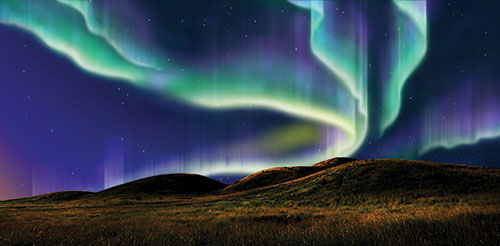Auroras shine light on solar flares
Published: 2 May 2013
Astrophysicists are looking to the Northern Lights to expand our understanding of huge explosions in the solar system: solar flares.
Astrophysicists are looking to the Northern Lights to expand our understanding of huge explosions in the solar system: solar flares.

Solar flares blast UV light, X-rays, high-energy particles and vast bubbles of magnetic field and plasma into space. Solar storms, although rare, can threaten power grids, satellites, global navigation satellite systems and digital control systems on Earth.
Scientists have been puzzled by how flare energy travels from high above the Sun’s visible surface, where it is released, down to just above the surface, where it is then radiated into space.
Now, Dr Alexander Russell and Dr Lyndsey Fletcher have suggested that magnetic waves could be the answer, helping energy from solar flares travel tens of thousands of kilometres in under a second.
To reach this conclusion, the physicists were inspired by auroras on Earth, commonly known as the Northern and Southern Lights. During auroras, magnetic waves carry energy downwards along Earth’s magnetic field.
Related pages
- Dr Lyndsay Fletcher
- Astronomy and Astrophysics
- Space Glasgow
- Space weather monitoring
- Solar-flare forecasting with multi-wavelength data
- College of Science & Engineering
First published: 2 May 2013
<< News

